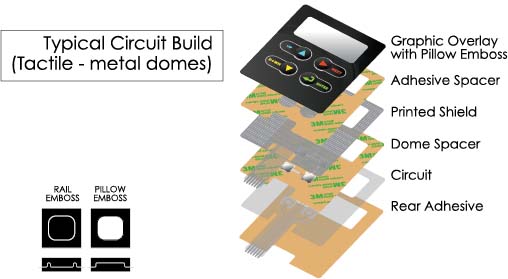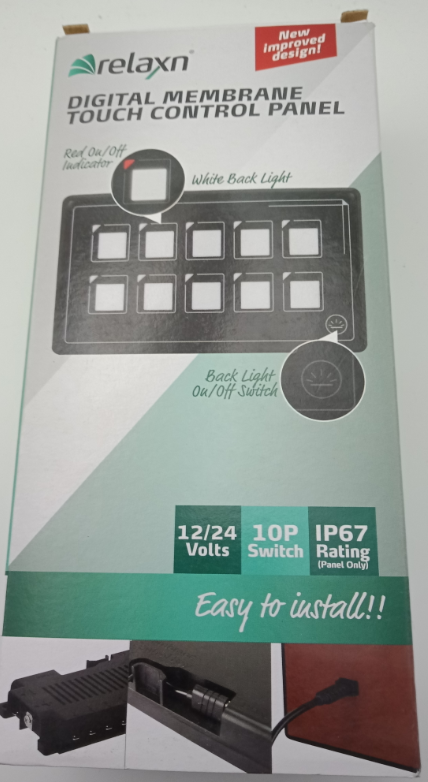A Comprehensive Guide to Membrane Switch Design and Manufacturing
A Comprehensive Guide to Membrane Switch Design and Manufacturing
Blog Article
Comprehending Membrane Switches Over: The Secret to Durable and Reputable Controls
Membrane layer changes stand for a vital facet of contemporary interface layout, blending capability with durability in various applications. These versatile elements not only facilitate user communication yet are also engineered to withstand the roughness of requiring settings, from clinical tools to commercial equipment. Comprehending their construction, operation, and the myriad benefits they provide is crucial for designers and designers alike. As we discover the ins and outs of membrane layer buttons, it comes to be clear that their role in boosting control systems is both complex and extensive, raising concerns concerning exactly how best to leverage their abilities in future advancements.
What Are Membrane Switches?
Membrane buttons are a sophisticated service in the world of interface innovation, incorporating functionality and layout effortlessly. These tools function as an interface between individuals and electronic systems, integrating numerous parts into a small format. Usually constructed from flexible, thin layers of materials, membrane layer switches are created to respond to touch, allowing individuals to interact with machinery and electronic gadgets successfully.
The primary elements of a membrane switch include a printed circuit layer, visuals overlay, and a spacer layer that stops unintended activation. The visuals overlay can be customized to mirror brand name identity or customer preferences, boosting visual appeals while making certain functionality. Membrane switches are frequently utilized in various applications, including medical gadgets, consumer electronics, and industrial devices, owing to their toughness and resistance to environmental factors such as dampness and dirt.
Among the vital benefits of membrane switches is their capacity to stand up to damage, making them excellent for high-traffic environments. Additionally, they are light-weight and need minimal space, permitting ingenious layouts in product advancement. Generally, membrane switches represent a sensible and reliable choice for modern electronic user interfaces, weding modern technology with user-centric layout concepts.

Just How Membrane Layer Changes Job
The operation of membrane layer changes hinges on a simple yet effective device that translates customer input into digital signals. When a user presses the switch, the top layer warps, permitting a conductive element in the circuit layer to make contact with an equivalent conductive pad on the underside of the graphic overlay.
The style of membrane layer buttons can differ, however they typically include domes or responsive elements to give responses to the individual, improving the general experience. The products used in membrane layer switches, such as polyester or polycarbonate, contribute to their sturdiness and resistance to ecological elements, including wetness and dirt. Furthermore, the printed circuits are generally enveloped, which safeguards them from deterioration with time.

Benefits of Membrane Buttons
Among the main benefits of membrane buttons is their versatility in layout, allowing them to be tailored to fulfill particular individual demands and visual requirements. This flexibility encompasses different industries, where different shapes, dimensions, and colors can be utilized to improve user interaction and visual allure.
Additionally, membrane layer switches are understood for their longevity. Constructed from durable products, they are immune to dirt, wetness, and physical wear, which dramatically expands their lifespan compared to traditional mechanical switches. This sturdiness makes them particularly ideal for high-traffic atmospheres and applications requiring longevity.

Furthermore, membrane switches offer a streamlined account, resulting in a thinner layout that can be integrated right into different tools without adding mass. This function not just enhances the aesthetic appeal but likewise contributes to a more ergonomic product design.

Applications of Membrane Layer Switches
Easy to use and functional, membrane layer buttons locate applications throughout a wide variety of industries, including clinical gadgets, consumer electronics, and commercial equipment. In read more the clinical field, these switches are indispensable to devices such as analysis tools, person monitoring systems, and infusion pumps, where reliability and convenience of cleansing are crucial. Their ability to stand up to harsh atmospheres and keep capability makes them excellent for such applications.
In consumer electronic devices, membrane switches are made use of in products like microwaves, washing makers, and push-button controls - membrane switch. Their smooth layout enables for intuitive individual interfaces, enhancing the total customer experience while giving resilience and resistance to wear and tear
Industrial devices likewise benefits from membrane buttons, especially in control panels for machinery and automation systems. These buttons supply security versus dust and dampness, ensuring regular efficiency in difficult environments. Their customizable features permit manufacturers to tailor them to particular operational needs, improving performance and functionality.
Selecting the Right Membrane Switch
When choosing a membrane layer button, it is important to take into consideration various factors that affect performance and viability for particular applications. The primary factors to consider consist of ecological conditions, tactile responses, resilience, and design specifications.
First, assess the operating atmosphere; switches subjected to moisture, chemicals, or extreme temperatures require specific products to ensure durability and performance. Next off, assess the demand for responsive comments. Relying on user interaction, some applications may gain from a tactile reaction to validate activation, while others may favor a non-tactile layout for visual reasons.
Toughness is an additional essential aspect; membrane switches should be created to stand up to frequent usage, effects, and abrasion. Make sure the chosen look at this now button can sustain the anticipated lifecycle, especially in high-usage circumstances.
Verdict
In final thought, membrane layer changes serve as important elements in the layout of dependable and sturdy control systems throughout numerous sectors. The convenience of membrane switches over allows for customized services that meet specific functional requirements, enhancing their significance in modern-day innovation.
Membrane switches over stand for a crucial facet of modern user interface design, blending functionality with strength in various applications.Membrane layer buttons are a sophisticated service in the world of individual interface innovation, combining functionality and design flawlessly. Normally constructed from flexible, thin layers of materials, membrane layer buttons are developed to respond to touch, making it possible for customers to engage with machinery and digital gadgets successfully.
The design of membrane switches can vary, however they usually integrate domes or responsive elements to give responses to the customer, boosting the total experience.In final thought, membrane read here changes offer as important parts in the layout of long lasting and dependable control systems across various markets.
Report this page